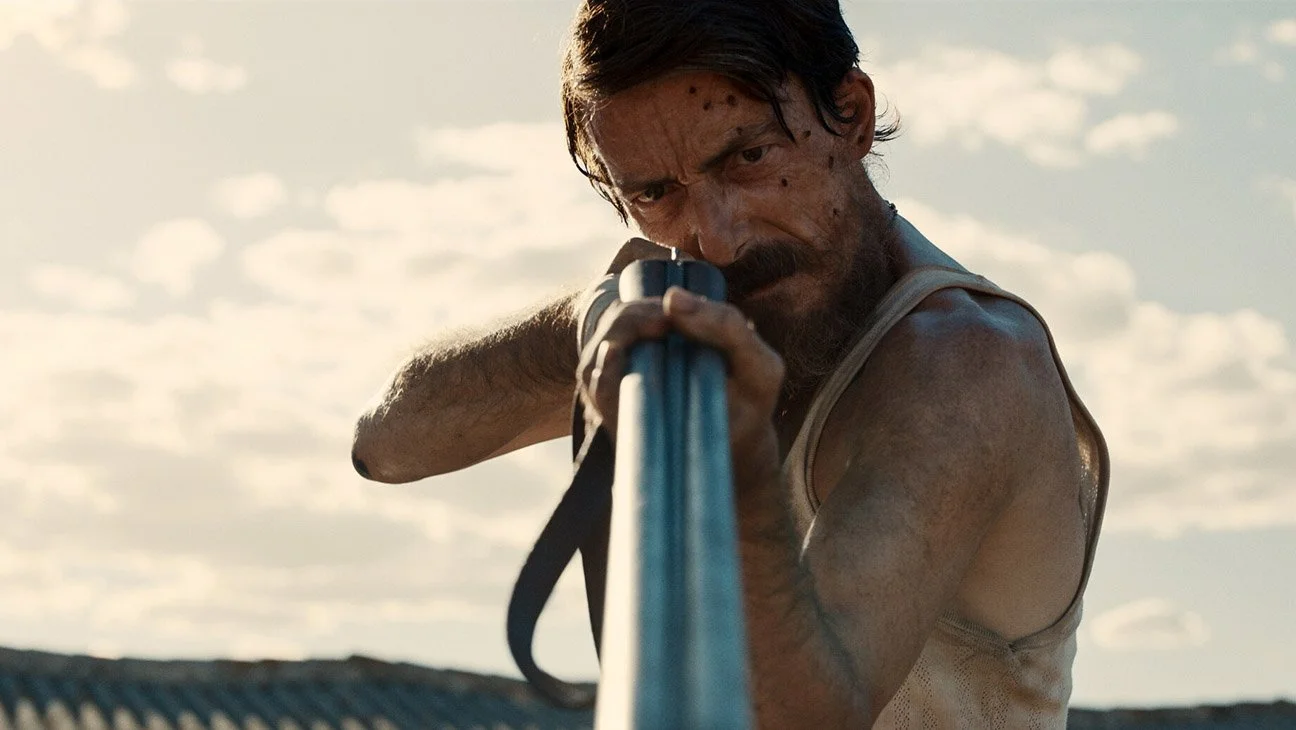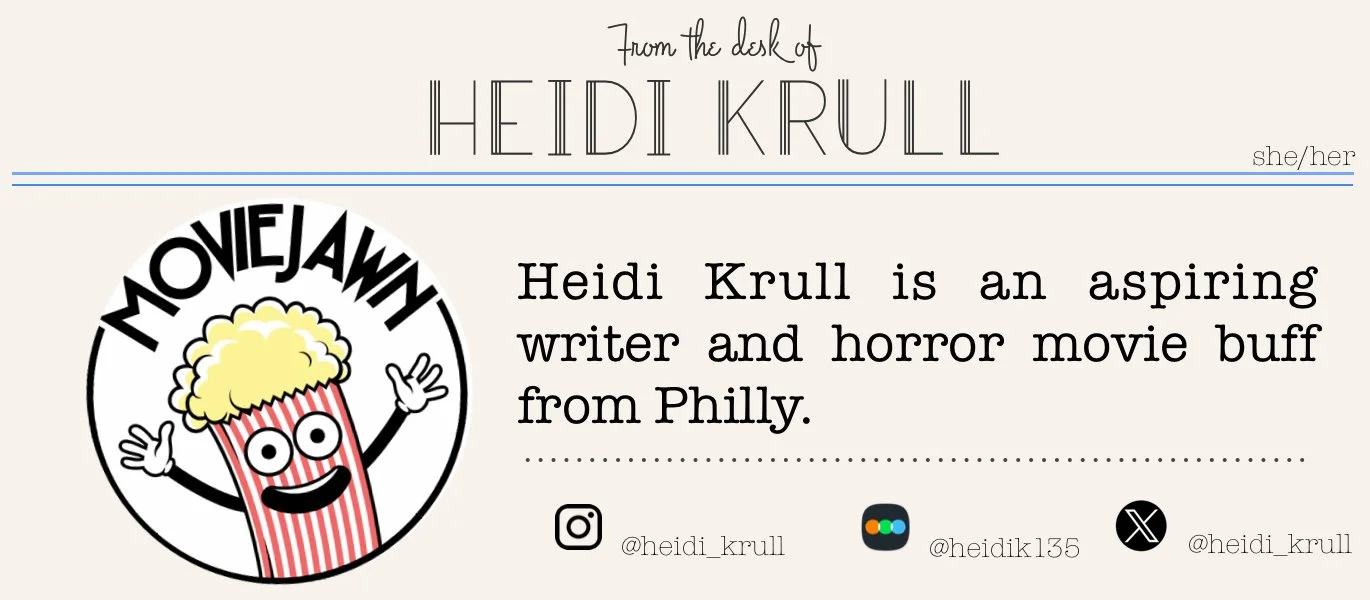THE WAIT explores grief and loss under a folk horror mask
The Wait
Written and Directed by F. Javier Gutiérrez
Starring Victor Clavijo, Ruth Díaz, Moisés Ruiz, Pedro Casablanc, Manuel Morón
Runtime: 1 hour 39 minutes
Available on VOD and digital October 4
by Heidi Krull, Staff Writer
Slow burn horror films are complicated to execute well, but when they are, they never fail to amaze and disturb me. The Wait, directed by F. Javier Gutiérrez, brilliantly depicts the uber-rural Andalusian countryside shrouded in mystery and riddled by dark magic. Gutiérrez is known for his work in independent horror, releasing popular European projects such as Before the Fall (2008) and Rings (2017). While this type of horror certainly is not for everyone, Gutiérrez’ familiarity with this subject matter shows clearly in The Wait, and has the absolute ability to frighten beyond belief.
The film opens with our main character, Eladio (Victor Clavijo) teaching his son, Floren (Moisés Ruiz) how to shoot with a hunting rifle. Their family lives on a rural estate run by the head honcho, Don Francisco (Manuel Morón), who is seldom seen by anyone. Eladio is conflicted when he is told to go against Don Francisco’s orders about their next hunt, but because he and his wife Marcia (Ruth Díaz) need the extra cash, Eladio decides to go along with it. Little does he know, this one, seemingly minor decision would have devastating effects. Eladio’s life turns upside down when Floren is gravely hurt during his first hunt, and he rapidly begins the long descent into madness as the townspeople and the land of Andalucia turns against him.
Upon my first watch of this film, I noticed the small intricacies of the cinematography that blew me away. The shots in this film are unique in their execution, and further portray to the audience what Eladio is going through in his own mind. There are uncomfortable, long closeups of Eladio’s face, which gets more tattered and worn as the story progressed, but the shot devolves into another subtly horrific scene. The way these shots are done make the breaks in this film deceptive. While the horror in this film slowly reveals itself to both the audience and Eladio, neither party truly gets a rest between scares. One second Eladio drops his wedding ring in the sink, and the next there is a snake coming out of his drain, and the next he unearths a clue that could tell him why all of this is happening. The cinematography of this film helps the odd pacing make sense, and the contrast between the horror of the events and the beauty of the shots was mesmerizing. I felt as if I was being dragged into Eladio’s mind through his actions, and I was glued to the edge of my seat.
Since director Gutiérrez is from the region of Andalusia where The Wait takes place, I definitely could feel his familiarity, nostalgia, but also his caution about the place he grew up in. There is so much rich history coming from this region, and they have their own boogeyman tales just like any other country would. Toward the end of the film, a more witchy, paranormal element came into play. Eladio would uncover animal body parts, old clothes, and other creepy objects that were silently telling him why his woes began. His friends, neighbors, and even his dog seemed to suddenly despise him, hinting that the physical land he was on was punishing him. The Wait really did make me wait for the other shoe to drop, and the quiet horror soon turned blaring at the end. Gutiérrez said in an interview that he wanted to create a story about grief, loss, and the brutality of our own human nature disguised as a folk horror. Eladio’s story is terrifying and tragic to be sure, but the real horror of the film lies beneath the gore and the murder. Eladio’s inner spiral working alongside Gutiérrez’ Andalusian knowledge and childhood is what created the horror.
This film expertly displays the harsh reality that many people in poverty face, and uses a staunch contrast between Eladio and Don Francisco at the end. While Eladio is downtrodden, covered in blood and dirt and reckoning with the end of his life, the first time Don Francisco appears is the exact opposite. He is clean cut, wearing a brand new suit and living in a mansion as Eladio suffers. The Wait often used symbolism to drive home the reality of Eladio’s demise, such as classic demonic and witchcraft symbols. As mentioned, Eladio would find ritualistic items around his house, but for me it was the final shot that drove this film home. The camera zoomed in behind Don Francisco to a mounted animal head, specifically one that was hunted in their area, as haunting instrumentals played in the background. The foreboding nature of this final scene was an excellent conclusion to Eladio’s sad tale; because he did not listen to the land (and the powers above him), his end was always going to happen in the way it did.
The Wait is a master class in creating slow burn horror, and has all the elements horror fans could want for this spooky season. Gutiérrez shows off his expertise about the land he came from and portrays loss like nothing I have ever seen. The Wait makes us uncomfortably aware that life could turn on you any minute, and any decision you make could come back to bite you. For those who are not typically fans of slow burners, I advise you to simply wait for the payoff this film will give you.



